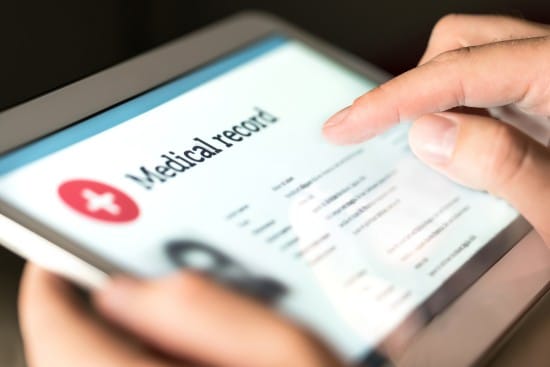The goal of your holistic practice, no matter the specialty you offer, is to deliver quality care and effective treatment to the patients in your community. Complementary treatments like massage therapy or acupuncture are proven methods for managing ailments such as chronic pain and are valid avenues to reduce widespread opioid usage.
One method for attracting new patients to your holistic practice is to network with medical practices in your community. These physicians—who likely have patients living with pain or other ailments—would be a great source for patients getting referrals for holistic treatments instead of prescription medications.
Networking in healthcare can feel intimidating if you’re not sure what to do or where to start; however, with just a few tips, your holistic practice can enjoy the benefits of networking and delivering great care to your community! Let’s explore some benefits of networking and how to get referrals from medical practices in your area.
5 Benefits of Networking in Healthcare
Networking, which is another word for professionally mingling, can provide a few benefits to your holistic practice and revenue cycle when it comes to making new connections and strengthening partnerships with other healthcare professionals.
Some benefits of networking for your holistic practice include:
Develop Business Connections In Your Area
Networking is about sharing information and resources with other healthcare professionals in your community. What naturally happens as part of this exchange is building and fortifying relationships within your city or town. Meeting and connecting with fellow healthcare providers can lead to a more engaged network, which leads to partnerships and opportunities in the future.
Get Inspired with New Ideas for Your Holistic Practice
With each venture into the realm of networking in healthcare, you’re likely to see new perspectives or creative marketing techniques as implemented by other healthcare professionals. Maybe it’s a catchy slogan, appealing graphic design scheme, or inventive manner for capturing information via QR code or raffle drawing. Alternatively, if you see the same monotonous patterns of the presentation then maybe your lightbulb moment is working out how to distinguish your practice from others.
Learn What’s Available in Your Community
They say knowledge is power and that you don’t know what you don’t know. Networking in healthcare helps you learn what practices, resources, people, and programs are available to your community. This information can be pivotal to share with your patients and can help inform you and your staff of other professionals in your community. Exploring what your community has to offer can help you empower your patients and, in some cases, help you see what might be missing.
Put Your Name Out There
A cornerstone of networking and building relationships within your community is simply showing up. When you put yourself and your holistic practice out there, other practices and professionals will take notice! Don’t underestimate the power of a conversation or the opportunity to meet new people in the healthcare field.
Boost Your Healthcare Revenue Cycle
There’s no doubt that networking in healthcare has the potential to grow your business and attract new patients to your holistic practice! From this perspective, networking is a huge resource to boost your healthcare revenue cycle management strategy and enable you to boost revenue with new customers.
3 Tips for Networking with Medical Practices
Ready to reap the aforementioned benefits of networking in healthcare and connect with medical practices in your community? Start with these 3 tips for networking in healthcare, which include:
Connect on Social Media
Networking doesn’t have to be accomplished in-person—social media platforms are a wealth of information and have a ton of resources that can help you connect with medical practices in your city.
Consider making a business account for your holistic practice on Instagram or Facebook and share helpful content for your followers and patients. This is a great resource for you to also engage with the medical practices who also utilize Facebook or Instagram—you can Like, Comment, and Share their posts, when relevant, which results in them noticing your profile and connecting with you.
Another method for connecting on social media is to leverage LinkedIn; use your profile to interact with other healthcare professionals and share useful content on the site. This is an effective way to keep you and your holistic practice top of mind when medical practices and their physicians are looking to refer patients to complementary providers.

Leverage Your Patients’ Word of Mouth
The patients who visit you for holistic treatments likely have a traditional medical provider that they see—therefore, they’re a perfect bridge for connecting you and the medical practices in your area! When appropriate, asking about their physician can lead to the perfect networking opportunity and help you gauge where your patients are coming from. This information can help you target specific medical practices in addition to broad networking efforts with other healthcare professionals in your community.
Organize an Open House
Instead of—or, in addition to—networking efforts that take you out of your holistic practice, consider hosting an open house or networking event at your office!
Bringing other healthcare professionals and potential patients into your space gives you a chance to demonstrate how clean and comfortable your practice is; plus, it can help them geographically place your holistic practice in relation to their home, practice, gym, and other spots that they frequently visit. You can entice people to visit and participate in your networking event by offering a raffle or drawing for a gift card.
Wish You Had More Time for Networking? Let Holistic Billing Services Handle Your Revenue Cycle!
Marketing efforts, organizing events, traveling to professional events, and more all take time, energy, and creativity. These resources can be strained if you’re constantly dealing with mountains of paperwork or having to rework rejected claims that cost your holistic practice money.
Partner with Holistic Billing Services to handle your medical coding and billing needs so you can focus more on what matters most: delivering great holistic care to your community! Our experts have extensive experience in whatever your specialty is and we’re eager to help your practice thrive.
Contact us today to learn more!
Did you know that healthcare data breaches cost US industries $6.2 billion per year? With such a high cost, it’s more critical than ever to ensure that your holistic practice is taking the best steps possible to avoid a breach and safeguard your patients’ information.
One critical method for ensuring the privacy and safety of your patient’s sensitive information is to maintain compliance with the HITECH Act, which streamlines operations and keeps your holistic practice secure.
What Is the HITECH Act?
The Health Information Technology for Economic and Clinical Health Act (HITECH Act) was signed into law as part of the American Recovery and Reinvestment Act (ARRA) in 2009 with the purpose of encouraging adoption and “meaningful use” of technology in healthcare environments. A core component of this Act’s intention is to promote the use of electronic health record systems, which improves quality, communication, and protection for the patient’s sensitive information.
In this context, “meaningful use” is critical for this Act. The federal government wasn’t just trying to get more computers and electronic devices in healthcare offices for no reason—it was to encourage the adoption of technology with the purpose of leveraging these resources to achieve five goals:
- Improve quality, safety, and efficiency
- Engage patients in their care
- Increase coordination of care
- Improve the health status of the population
- Ensure privacy and security
These five goals are cornerstones of healthcare legislation like the HITECH Act, which promises to streamline operations and protect sensitive patient information.

Why HITECH Compliance Is Important for Your Holistic Practice
HITECH compliance isn’t the same as HIPAA compliance; the two are separate laws that complement each other well and work towards the same goal of protecting patient information but compliance with both Acts is important for your holistic practice.
Maintaining compliance with HITECH ensures that your holistic practice is able to access appropriate patient records, share patient information with pertinent parties as needed to improve collaborative care and that your holistic practice is taking steps to protect against cybersecurity threats to sensitive patient information.
Utilizing an electronic health records system and other relevant types of healthcare technology promotes what is called “data interoperability”, which essentially means that communication is effectively and securely shared, stored, and managed.
The benefits of data interoperability include:
- Two-way communication between healthcare providers, holistic practices, state public health agencies, etc.
- Standardized means of sharing data so that information exchanged can be readily interpreted and understood
- Overall efficiency across the healthcare industry
HITECH Compliance + Your Holistic Practice: Top Essentials to Know
Let’s review a few essential things to know when it comes to HITECH compliance and your holistic practice:
3 Principles to Achieve and Maintain Compliance
HITECH compliance starts with a few foundational steps and principles under which to operate in your holistic practice:
- Train your employees and confirm that your healthcare partners are knowledgeable of HITECH requirements to ensure that your practice is comprehensively compliant with meaningful use of electronic health records systems and patient privacy rules
- Implement an information security program that guarantees your patient data is private and protected from unauthorized access, storage, handling, etc. Make sure that your staff routinely refresh their knowledge of HITECH and HIPAA compliance
- Facilitate and encourage good cybersecurity practices like strong passwords, frequently updating passwords, restricting access to former employees, etc. so that your holistic practice is taking steps to avoid being vulnerable to data breaches
6 Components of the HITECH Act
The HITECH Act is comprised of six components:
- Meaningful Use program: Establishes the goals of implementing technology in a variety of manners within the healthcare field
- Business associate HIPAA compliance: This addressed a loophole in HIPAA legislation that was exploited by Covered Entities claiming they didn’t know that a Business Associate wasn’t compliant; with HITECH, more stringent reporting requirements were outlined
- Breach notification rule: Patients whose information was accessed or stolen in a cybersecurity breach must be notified within 60 days
- Willful neglect and auditing: Under the HITECH legislation, audits for HIPAA or HITECH violations could now result in a tiered system of fines depending on the findings of the audits
- HIPAA compliance updates: Once again fortifying HIPAA legislation, this component of the HITECH Act increased potential fines for violations and tightened up restrictions
- Access to electronic health records: With HIPAA, patients were given rights to obtain a copy of their records in physical form; with HITECH, patients were given rights to obtain an electronic copy of their records
Each one of these components plays a vital role in HITECH legislation and its importance to the progression of patient protection.
A Medical Billing Firm Can Help Streamline Your Holistic Practice!
When you’re so entrenched in the medical billing and coding process, facing claim rejections due to inaccuracies, and constantly trying to stay up to date on insurance or Medicare regulations, it can be too much to try and stay current on important legislation that impacts your holistic practice and your patients.
Partnering with a medical billing firm can tremendously help streamline your holistic practice by confidently and competently handling this important component of your holistic practice’s revenue cycle! Consider outsourcing this part of your practice’s operations so that you and your team can address other vital parts of your practice.
Holistic Billing Services has decades of experience and expertise in your holistic practice’s specialty. We’re eager to help you streamline your operations and boost your revenue cycle while you deliver great care to your patients.
Your massage therapy practice is responsible for delivering great care to your patients through the many benefits of massage. If you’re looking to expand any specialty services that you offer, consider adding fascia stretching to your practice’s repertoire! Fascia stretching and fascia massage can help you grow your practice by speaking to physical pain points that your community might be experiencing. Keep reading to learn more!
What Is Fascia Stretching?
Fascia encompasses each muscle and connects muscles together both on the surface and on a deeper level. Fascia connects tendons, ligaments, and bones to form a whole-body network of tissue—it also connects to your organs and internal systems.
Since this kind of connection exists between nearly all parts of the body, both internally and externally, fascia stretching and fascia massage therapy can significantly improve the mobility and flexibility of your patients.
Fascia stretching and massage address the entire body, intentionally and subsequently. It’s all connected, so delivering treatment to fascia results in delivering treatment to the entire body instead of isolated muscle groups or static stretching.
Who Benefits from Fascia Stretching?
Anyone can benefit from fascia stretching and fascia massage treatments, including any patient who is recommended for this specialty by their physician, fitness enthusiasts, athletes, and more.
Fascial restriction, or the limitation or pain affecting fascia in the body, can be related to trauma, strains, injuries, a sedentary lifestyle, and more. These causes might include the following suspects:
- overuse
- repetitive movements
- injuries
- weak muscles
- poor posture
- physical, mental, or emotional stress
- extended periods of sitting or standing
- overall lack of physical activity
- misalignments and imbalances
As with any type of treatment plan, the best course of action for treating a patient with fascia stretching or fascia massage will vary from one situation to the next. Typically more than one session is recommended, and overall mobility is often improved after just one treatment!
Fascia stretching results in decreased stress, improved sleep, and significant relief from pain in just a few sessions.
Why You Should Add Fascia Stretching to Your Practice
If you’re wanting to grow your massage therapy practice by expanding the variety of specialty massages or treatments that you offer, consider adding fascia stretching for the following reasons:
Attract New Patients
Want to attract new patients? Consider adding fascia stretching and fascia massage services to your practice’s list of offerings. Potential clients in your community might be looking exactly for that service—or be recommended it by their physician or athletic trainer—which provides an excellent opportunity for your massage therapy practice.
It Complements Other Forms of Holistic Treatments
Fascia stretching doesn’t have to be a standalone form of holistic treatment for your patients; it dovetails quite nicely with other forms of massage therapy treatments, acupuncture treatments, and more! This means that your holistic practice is able to furthermore offer comprehensive, integrated care for your community.

Top 3 Benefits of Massage Therapy
In general, massage therapy can help provide relief for a variety of conditions and ailments, including:
Repetitive Motion or Strain Injuries
For those suffering with pain from repetitive motion or strain injuries, or other related issues that negatively impact the muscles and joints, massage therapy can greatly improve mobility and reduce the pain associated with these injuries. Sensations like tenderness, throbbing or sharp pain in movement, tingling, etc. can be the result of overusing a group of muscles, staying in a particular posture for an extended period of time, heavy lifting, or another factor. Massage therapy can help reduce these feelings and restore mobility.
Chronic Pain
Massages have an inherent attachment to ideas of relaxation and gentle unwinding—and for good reason! Massage therapy facilitates relaxation which makes it a surefire way to reduce painful, chronic conditions. Whether caused by surgery, injury, or simply chronic ailments that induce pain, massage therapy can help your patients experience a lighter breath with reduced pain because it promotes blood flow and circulation while releasing the body’s natural painkillers.
Mental Ailments, like Depression
If your patient is experiencing depression, massage therapy likely won’t cure the condition alone—but it will relieve the physical symptoms associated with it, such as lethargy, back pain, joint pain, muscle aches, and more. By encouraging blood flow and promoting relaxation on a physical level in the patient’s muscles and connective tissue, they’ll become less stiff or rigid which might be contributing to their pain.
Why Effective Massage Therapy Insurance Billing Matters When Treating Patients
When massage therapists deliver treatments, such as fascia stretching or fascia massage, the medical billing process ensures that they receive reimbursements for delivering quality care. While medical billing is an integral function of the reimbursement process, it can be very complex; the slightest error can delay payments for weeks, if not longer. Ensuring the most accurate medical billing allows massage therapy practices to spend more time doing what they love: delivering care to their patients.
As an experienced billing provider for holistic providers, including massage therapists, Holistic Billing Services can help your massage therapy practice navigate the medical billing process to minimize denials and delays so you can increase revenue. With an expert partner by your side, you can focus more on treating patients to help your practice grow rather than worrying about insurance billing. To learn more about our massage therapy billing services, talk to one of our billing and coding experts today.
Healthcare documentation is a critical component for your holistic practice, both in terms of delivering great care to your patients and for insurance billing purposes—not to mention the importance of having some form of documentation in the event of a legal situation.
Treatment notes are needed to keep a live record of how your patient is feeling and what plans have worked in the past or what needs to change for the future; keep reading to learn more about a particular outline of healthcare documentation called SOAP notes and how they can play a role in your holistic practice’s insurance billing cycle.
What Are SOAP Notes?
One standard form of healthcare documentation is called SOAP notes, which stands for Subjective Objective Assessment and Plan. Each section of this general formula is key to gathering a comprehensive report of the patient’s current experience and determining the best treatment plan.
Subjective
This is the first section of SOAP notes and pertains to the subjective experience of the patient you’re treating; this includes their feelings, perspective, and personal views as relevant to the treatment setting. The purpose of this section is to provide context for why the patient is visiting your holistic practice and to allow the patient to put into their own words what is going on with them.
Depending on the setting of your holistic practice and what type of treatments you offer to your patients, this section might have a few other subheadings to further elaborate on what the patient is experiencing.
For example, if you were doing a consultation for massage therapy services, you might include the following sections:
- Rate the intensity of pain on a scale of 1 to 10
- Describe the sensation of the pain, such as shooting, dull, cramping, tingling, throbbing, aching, etc.
- Note the places of pain on the body
- Explain how the pain started and how it might change during the day with different movements, what makes it worse or what helps reduce the pain, etc.
This initial section is important for illuminating how a patient’s condition is affecting them so that you can determine how best to address their pain points—both literal and metaphorical.
Objective
As opposed to subjective, this second section deals with objective, unbiased facts regarding the patient’s condition. Such information might include:
- Patient’s vital signs
- Diagnoses
- Allergies
- Imaging results
- Lab data
- Behavioral or physical signs
- Body posture
- Range of motion
It’s important to distinguish between symptoms and signs in this section; symptoms are considered subjective whereas signs are considered objective notes. As with all medical documentation, it’s also crucial to filter out any kind of assumptions in the note-taking process; each objective note should be verifiable through evidence.
Assessment
This third step of SOAP notes is where you bring together the subject and objective portions of your documentation and determine what might be ailing your patient. In this section, you might list whatever problems or diagnoses that patient is presenting with, in order from most to least important or severe.
The assessment portion of SOAP notes is important because it provides documentation of the diagnosing process and serves as a record of your thinking. Assessing the patient is helpful for other providers to review your conclusions and inform them on how best to deliver holistic care from their specialty or perspective.
Plan
The final step in writing SOAP notes is, of course, to outline a plan of care for the patient you’re serving. This section might include information like:
- What follow-up appointments are needed
- Referrals to other specialists
- Orders for further testing
- Therapy needed
The plan section is an essential conclusion to the SOAP notes outline because it provides the appropriate next steps and pertinent information for the patient to follow in order to begin their plan for treatment.
Importance of SOAP Notes and Treatment Documentation
The phrase “if it’s not documented, then it didn’t happen” might sound extreme, but in the world of healthcare—whether medical or holistic—it’s the norm. Treatment documentation is essential because it functions as part of the patient’s medical history, enables collaborative care between providers and authorized entities, results in a better quality of care, and more.
SOAP notes are simply one outline to follow when doing healthcare documentation; it’s an easy acronym to remember yet ensures that all cornerstone portions of a patient’s experience are documented. From the patient’s subject experience and reported history of their ailment to what your recommendations are for treatment, SOAP notes provide a comprehensive record that can be referred to in the future.

Why SOAP Notes are Important for Insurance Billing
SOAP notes are also important for insurance billing purposes; because healthcare documentation is an essential part of operating a successful holistic practice, it’s vital that your insurance billing process is as streamlined as possible. SOAP notes—and healthcare documentation, in general—are crucial for insurance billing purposes for the following reasons, including:
Improved Patient Outcomes
With precise, consistent documentation comes better patient outcomes. This, of course, helps insurance companies regulate the cost of healthcare because improved patient outcomes are the result of efficient and effective care.
Streamlined Claims Processing
As you well know, you can’t just willy-nilly code a patient-provider interaction with just any kind of coding; you need to back up your medical billing and coding with evidence of why you’re submitting a claim for that interaction! SOAP notes and healthcare documentation overall help justify why you’re submitting a claim for reimbursement.
Reduce Risk
Precise, comprehensive documentation that follows a logical line of reasoning is an effective way to reduce the risk of malpractice claims at your holistic practice. It’s hard to justify any kind of treatment plan or diagnosis without evidence, so SOAP notes and other forms of healthcare documentation are essential to reducing your practice’s risk in terms of delivering misguided care.
Streamline Your Holistic Practice’s Medical Billing with Holistic Billing Services!
Do you find yourself staying late to catch up on the medical billing and coding process of your holistic practice? Turn to the experts at Holistic Billing Services to streamline this entire process for you so that you can focus on what matters most: delivering great care to your patients.
Contact us today to learn how our experienced team can help boost your medical billing process and optimize your revenue cycle along the way!
One vital component for your holistic practice’s success is maintaining HIPAA compliance because it protects patient information, secures your operations, and prevents the chance of a breach that can greatly impact your practice’s reputation. We’ve compiled this comprehensive HIPAA cheat sheet to help you further understand this important legislation and how it pertains to your holistic practice.
History of HIPAA
The Health Insurance Portability and Accountability Act was signed into law on August 21, 1996. This vital piece of legislation created national standards to protect sensitive information regarding patient health from being shared or disclosed without the patient’s knowledge or consent. Basically, HIPAA prevents personal health information (PHI) from being discussed without the patient’s awareness and fortifies a patient’s privacy.
In addition to securing patient privacy and health information, HIPAA legislation aimed to prevent fraud and waste while also promoting medical saving opportunities across the healthcare industry as a whole. For example, certain tax breaks were established in this Act.
In 2009, the Health Information Technology for Economic and Clinical Health Act (HITECH) was passed, which establishes technological compliance requirements in alignment with HIPAA practices. This Act encourages the implementation of electronic health records to secure patient information and features the Breach Notification Rule stating that breaches exceeding 500 individual records must be reported to the Department of Health and Human Services’ Office for Civil Rights (OCR).
The latest legislation related to HIPAA was the Final Omnibus Rule, approved in 2013. The purpose of this Rule is primarily to refine HIPAA definitions and include compliance requirements for new pieces of technology, such as mobile devices.
Why Is HIPAA Important for Your Holistic Practice?
Besides protecting your patients’ information and safeguarding their privacy, HIPAA provides some administrative benefits to your holistic practice. Encouraging the transition from paper to electronic health records streamlines your practice and allows for more collaboration with other providers pertinent to your patients. Plus, all HIPAA-covered entities must utilize the same set of codes, so communication from one practice to another organization is further streamlined for efficiency.
Your HIPAA Cheat Sheet
Let’s break down some of the most essential components of HIPAA for your holistic practice’s reference:
PHI and ePHI
Personal health information, known as PHI, can take on a variety of forms that are all relevant to following HIPAA compliance. Here are the 18 types of information that are considered protected health information (PHI) under HIPAA:
- Name
- Address (Including any information more localized than state)
- Any dates (except years) related to the individual, including birthdays, date of death, date of admission/discharge, etc.
- Telephone Number
- Fax Number
- Email address
- Social Security number
- Medical record number
- Health plan beneficiary number
- Account number
- Certificate/license number
- Vehicle identifiers, serial numbers, license plate numbers
- Device identifiers/serial numbers
- Web URLs
- IP address
- Biometric identifiers such as fingerprints or voiceprints
- Full-face photos
- Any other unique identifying numbers, characteristics, or codes
ePHI, or electronic personal health information, simply refers to PHI that is transferred, accessed, or stored electronically. The same protections apply across PHI and ePHI.

Who Needs To Follow HIPAA Compliance?
Since PHI can be present in a variety of fields and formats, there are multiple types of individuals and organizations who must comply with HIPAA guidelines as they come across it, including:
- Healthcare providers: This is obvious, but it’s worth noting—healthcare professionals can have access to a plethora of patient information, so it’s crucial that they maintain HIPAA confidentiality when handling this sensitive data
- Health plans: Whether privately run or publicly operated programs like Medicare, health insurance-related agencies and their staff must adhere to HIPAA regulations
- Healthcare clearinghouses: These companies act as a kind of go-between for processing sensitive information and still need to maintain HIPAA standards
- Business associates: This covers the overarching third-party vendors or other businesses who interact with PHI for a variety of reasons
The ultimate aim of HIPAA legislation is to protect sensitive patient information across all platforms, so it’s vital that all parties follow HIPAA regulations when applicable.
Privacy Rule
The Privacy Rule essentially dictates that sensitive information is only used or disclosed with appropriate safeguards in place. It also stipulates that patients have rights to access their personal health information, obtain a copy of their records, authorize the communication of their records, and more.
The Privacy Rule is located at 45 CFR Part 160 and Subparts A and E of Part 164
Security Rule
Proposed in 1998 by the Department of Health and Human Services, and later ratified in 2003, the Security Rule sought to improve the security of a person’s health information that is shared between authorized parties, such as healthcare providers, health plans, and other pertinent organizations.
The Security Rule is located at 45 CFR Part 160 and Subparts A and C of Part 164.
Breach Notification Rule
The Breach Notification Rule was officially adopted in September 2009 and stipulates that any breach of electronic personal health information exceeding 500 individual records must be reported to the OCR and that each individual must be alerted to the breach, as well.
A breach is defined in HIPAA section 164.402 as:
“The acquisition, access, use, or disclosure of protected health information in a manner not permitted which compromises the security or privacy of the protected health information.”
When a breach occurs, the business or organization affected must determine the severity by considering what type of information was involved, who potentially saw this information, and evaluate the risk of the incident. From there, the organization can proceed with either patient notification—if the incident qualifies as a breach—or further risk mitigation.
There are also three exclusions to what counts as a breach:
- If the exposure was unintentional and is not expected to be a repeated offense
- If it was an accidental exposure from one HIPAA-certified person to another HIPAA-certified person
- If the covered entity—or organization—has reason to believe the unauthorized person wouldn’t be able to retain details of the personal information
Omnibus Rule
The Omnibus Rule is the latest piece of legislation to be associated with HIPAA. Taking effect in 2013, this Rule updates some definitions contained within the original act and expands the liability of businesses for not being HIPAA compliant. It also further protects patient information since it requires businesses to adhere to the Privacy and Security Rules which strengthen security measures when handling PHI and ePHI.
Maintain HIPAA Compliance with HBS
The experts here at Holistic Billing Services are HIPAA certified to handle your patients’ personal health information while streamlining your overall revenue cycle with excellent medical billing and coding processing. Your success is our success, and we offer a range of services to partner with your holistic practice including medical billing, consultation services, and more!
Our expertise is rooted in professional, technical, and global billing for hospital and stand-alone holistic care practices. To learn more about how outsourced medical billing with Holistic Billing Services can empower your practice, contact us today. We’ll work with you to build a customized solution that meets the specific needs of your practice and allows you to get back to treating patients.
Referrals are a fantastic method for gaining new patients at your massage therapy practice, but you can’t rely solely on them as a sustainable marketing strategy. Part of your future growth and success depends upon having a comprehensive advertising approach that can target a few different audiences across a variety of platforms. Keep reading to learn more about leveraging marketing to sustain a successful massage therapy practice!
Why Are Marketing and Advertising Important Avenues of Growth For Your Massage Therapy Practice?
Running a successful massage therapy practice means you’re marketing and advertising your services to the community you serve. After all, marketing and advertising are how you attract new customers, outline the services you provide and maintain relevance in your target market. Without utilizing strategies that promote your massage therapy practice, what are the odds of someone stumbling across it? Word of mouth is just one component of a comprehensive marketing strategy—there are several other avenues to take advantage of!
Marketing your massage therapy practice in the community you serve, explaining who you are and what your story is, and providing blurbs of meaningful content are all great manners to get noticed and attract your most loyal patients. After all, your massage therapy practice can’t grow if you don’t show it off!
How Much Should You Budget For Massage Therapy Advertising?
A good rule of thumb is to invest approximately 5% of your gross revenue on marketing activities if you want to maintain the size of your massage therapy practice. For example, if you collect $10,000 per month you should be budget around $500 per month on marketing and advertising tactics.
On the other hand, if you’re ramping up to grow your massage practice, it’s recommended that you spend between 7% and 15% of your gross revenue on marketing—depending on your goals and available budget for growth. It’s also understandable if your marketing budget changes a little bit over time; it should be somewhat flexible to account for the status and potential growth of your massage therapy practice.
What Is A Customer’s Lifetime Value?
As the name suggests, a customer’s lifetime value (CLV) is a prediction of the total financial worth of a patient to your massage therapy practice. CLV can be applied to any industry, but it’s incredibly practical to calculate it for the healthcare and service fields.
A Customer’s Lifetime Value can be measured in the following way:
Average Annual Value x Relationship Years + Patient Referral Value
= Customer Lifetime Value
First, we determine how much the average patient generates per year. For example, if you have a patient who visits your massage therapy practice once per month and each visit costs $100, then the total revenue generated is $1200. Factor in a 20% profit margin and the Average Annual Value of a massage therapy patient is $240.
Let’s say this patient continues going to your massage therapy practice for 10 years before moving to another state:
AAV ($240) x Relationship (10 years) = $2,400.
Patient Referral Value is the amount of additional revenue the original patient brings into your massage therapy practice by spreading the word about your services. If a patient refers two additional clients to your practice, and the total Average Annual Value for those patients combined is $480—which is $4,800 over 10 years—then the original patient’s official lifetime value is $7,200.
How Does CLV Impact Your Holistic Practice?

The lifetime value of a patient is equated to the anticipated total amount they’ll spend at your massage therapy practice. Knowing this figure for each of your patients is essential for planning your financial future and determining how much to invest in acquiring new patients or retaining current ones. Overall, CLV is directly connected to the profit level attached to each customer relationship; if you estimate a patient’s CLV to be $500, you wouldn’t want to spend more than that number to maintain the relationship since it wouldn’t be profitable to your massage therapy practice.
Once you start consistently measuring customer lifetime value, you can begin to implement specific strategies around pricing, sales, advertising, and patient retention with the goal of reducing costs and boosting profit. After all, when you know what to financially expect from a typical patient over the course of their relationship with your massage therapy practice, you can make educated spending decisions to ensure you maximize profitability and continue to attract the right types of customers.
5 Massage Therapy Marketing Ideas
When outlining an advertising plan for your massage therapy, keep these tips in mind:
Network with the Health Practitioners in Your Area
Whether you’re an experienced massage therapist or new to the industry—or your community—a great way to gain reliable patient referrals is through the doctors, naturopathic doctors, chiropractors, physiotherapists, and other holistic practitioners in your area. These providers work with clients who might desire a holistic approach to take care of their wellbeing, in addition to medical services. Plus, patients who are referred to you in this manner have a high probability of following through and becoming long-term, paying clients.
Invest in the Patient Experience
Patient experience entails every instance of connection between your patients and your massage therapy practice’s brand, including visits to your practice, phone calls to your front desk, engagement with your online presence, and even their exposure to advertising and social media. Optimizing the patient experience is a practice-wide effort that’s a process of monitoring, listening, and incorporating feedback from patients that add up to a continuous improvement of your massage therapy practice.
Leverage the Power of Social Media
Social media is ever more essential for patient communication and for potential patients to learn more about your massage therapy practice. Your overall online presence will affect the opinion a potential patient has of your brand moving forward, so be sure to take social media accounts, mentions, and responses into your customer experience strategy.
Start a Loyalty Program
A loyalty program incentivizes patients to continue visiting your massage therapy practice by offering discounts or benefits in return; it might take the form of a punch card or a points system that patients acquire with each visit. Although it’s not intended to be the sole method of retaining patients, a loyalty program can yield great results when it’s well done and implemented smoothly.
Facilitate Word of Mouth Marketing
Word of mouth marketing is a cornerstone of any massage therapy practice’s advertising plan. Potential clients who hear wonderful things about your practice from current patients are more likely to trust those reviews than almost any web presence or standalone marketing plan. Social media and other online review sites are excellent avenues to encourage your patients to talk about your massage therapy practice.
Massage Therapy Advertising Examples
- Massage Envy’s website boasts a holiday incentive program that promotes giving the gift of self-care to a loved one—a form of word of mouth marketing—yet treats the buyer with a $20 gift card in return. Plus, their site includes headers for the services offered—massage, stretch, and facials—so clients can easily navigate to what they’re looking for.
- Massage Studio, a local practice in Tampa, Florida, utilizes imagery to convey the goal of relaxation at their practice. Headers make it easy for clients to make appointments and a featured Etiquette page lets hesitant clients know what to expect, which helps break down trepidation about getting a massage. Promoting pertinent information on the homepage helps the site’s visitors feel that the practice is trustworthy, which benefits the brand’s image.
- CityTouch Massage Therapy, based in New York City, appeals to clients by proclaiming they now accept insurance. This can help make massage therapy more accessible to potential patients who might not explore massage options if not covered by their insurance plan.
Holistic Billing Services Supports Your Massage Therapy Practice’s Growth!
With these tips for marketing your massage therapy practice, we’re sure you’ll see sustainable growth! You can’t expand the community you serve unless your audience knows about how great your massage therapy services are—and part of ensuring the success of your practice entails having a streamlined medical billing strategy that minimizes errors while maximizing profits.
Partner with Holistic Billing Services to help grow your massage therapy practice in a variety of ways, including medical billing and coding, and facilitate the growth of your practice. Trusted since 1999, we’re here to help you put more time and attention back into your day of delivering quality care to patients.
Contact us today and let us help your massage therapy practice reach its potential!
When evaluating the success of your holistic practice, where do you start? It’s too short-sighted to worry only about keeping the lights on, but planning for the future on a broad, subjective scale can feel intimidating or overwhelming. That’s where tracking top healthcare KPIs can benefit your holistic practice. Healthcare KPI tracking can provide a tangible record of your operations across a variety of categories and aspects.
What Are Healthcare KPIs?
KPIs, also known as Key Performance Indicators, are metrics that can objectively measure various components of your holistic practice over time so you and your team can reflect on how the practice is performing and make educated decisions for the future. There are dozens of potential healthcare KPIs to track at your holistic practice, but try not to feel overwhelmed by the amount of data you’ll be collecting—each facet of your practice can be analyzed and optimized, but it doesn’t have to happen all at once. To start, select a few of the most important metrics that need immediate attention, then expand to measure other aspects of your operations.
Common Healthcare KPI Examples
As mentioned above, there are a variety of healthcare KPIs track that may or may not apply to your particular holistic practice, with categories including:
- Operations: These metrics focus on how efficient and effective your practice is at delivering care
- Finance: KPIs related to the financial performance of your practice measure the top and bottom line of your practice—your cost of operations and how much is returned
- Internal: Metrics relating to your internal operations track staff performance and administrative efficiency
- Public health: These KPIs reveal how your practice is impacting your community, whether in terms of child immunization doses, vaccine clinics, or educational seminar attendance numbers
- Emergency: In an emergency healthcare environment, it’s crucial to monitor how effectively your patients are receiving care, average wait time, patient mortality rate, and more
- Care quality: By keeping tabs on how many providers you have in relation to the number of patients you serve, patient satisfaction survey results, and more, you can evaluate how well your practice is serving your community
Why Are Healthcare KPIs Important for Your Holistic Practice?
It takes a lot of time, energy, and resources to operate an efficient and effective holistic practice. How can you be sure you’re succeeding in every aspect of your practice? Key performance indicators are your best bet to gain a comprehensive insight into your operations, finances, public perception, and more. These figures can help you understand the current status of your practice, observe historical trends, and make informed decisions regarding how to improve or further grow your practice.

The Best Healthcare KPIs and Metrics to Track For Your Holistic Practice Management
There are numerous key performance indicators you should consider tracking when evaluating the performance of your holistic practice; be sure to consider the specificity of your holistic practice, community, and overall operations when outlining which healthcare KPIs to monitor. The following breakdown is a foundational place to start and is by no means a comprehensive list of potential metrics to keep track of:
Patient Experience Metrics
The goal of your practice is to deliver quality care to your patients; after all, your practice can’t sustain itself without them! When measuring patient experience metrics, consider the following factors:
- Patient satisfaction: Utilizing patient satisfaction surveys can tremendously benefit your holistic patient care because you can solicit feedback or points of improvement from the very people you’re trying to please: your patients. Plus, by implementing a method of communication regarding their perception of your practice, you demonstrate how important they are to your success. When you establish an objective manner of measuring subjective components of your practice, such as ease of scheduling follow-ups or how comfortable the waiting room is, you can gain valuable insight into your practice’s performance.
- Referral mix: This healthcare KPI indicates what type of patients your holistic practice is treating and who referred them to your practice. Tracking this metric helps you understand which patients are finding you from word-of-mouth recommendations, which in turn affirms the success of your holistic practice’s mission of delivering quality care.
- No-show patients: It happens. Patients forget appointments or simply ghost your practice and never return your calls or attempts to reschedule. However, when this becomes a pattern at your holistic practice, do your best to get ahead of it and monitor these behaviors. If you find that a significant number of your monthly appointments are no-shows, it might be time to implement a no-show policy to discourage that!
Staff Performance Metrics
Your team is a reflection of your practice and keeps your practice running smoothly for your patients; when gaining insight into your staff performance, consider the following:
- Staff-to-Patient Ratio: Do you have dozens of weekly appointments for only a handful of providers at your practice, resulting in faster burnout or longer patient wait times? It’s crucial to consider how much time and attention your providers can give to patients for top quality care. If they’re stretched too thin, it’ll catch up to your practice sooner or later and you’ll have to hire additional staff to manage.
- Trainings and Certifications: When working in healthcare, it’s absolutely essential that your staff is HIPAA certified and follows best practices when handling patient information; it’s also beneficial that each member of your team have certifications in their pertinent areas of service.
- Mistake Events: This self-explanatory metric simply refers to the frequency and type of mistake or error made, whether administrative, related to medical billing, patient confidentiality, or another type of mistake. This metric can provide insight and help you determine the best course of action to correct the problem, preventing it from becoming an internal pattern.
Medical Billing Metrics
How well do you know the details of your holistic practice’s finances? If you’re only measuring the short-term successes of paying your monthly bills, there’s a lot you’re missing! Dig into the many facets of your financial performance and learn which areas to improve moving forward, including:
- Days in Accounts Receivable (A/R): This metric reveals how many payments remain outstanding at your holistic practice, either due to insurance reimbursement processing delays or out-of-pocket services. Ideally, the average time a bill spends in A/R should be about 30-40 days—the less time spent waiting for payment, the better. By tracking this metric, you can identify friction points along the payment cycle, such as billing and coding errors or not following up on claims, and redirect your efforts to streamline this process.
- Net Collection Ratio: One key financial metric to monitor is the net collection ratio, which calculates how much potential revenue your practice nets after insurance adjustments are made. While the exact figure will fluctuate from specialty to specialty, aim for collecting about 95% of potential revenue for services, whether by patient payers or submitting clean claims. If this healthcare KPI falls consistently dips below 90% then that tells you something needs to be addressed in your revenue cycle.
- New Patient Ratio: You can probably guess which figure this metric tracks; part of overseeing the financial health of your holistic practice is to sustain and grow your practice, which means a certain percentage of your patients are first-time visitors. When monitored over time, this healthcare KPI can help you determine if your holistic practice offers a desired balance of services for the price. Like with many other metrics, the exact figure to aim for can change from specialty to specialty; however, for general wellness practices, new patients can make up about 25% of visits, while specialty care practices could see up to 50% new patients each month.
Transform Your Medical Billing with Holistic Billing Services
By creating a monthly summary sheet to track healthcare KPIs, you can begin to identify and resolve problem areas in your holistic practice that are holding back growth and revenue.
Our experts here at Holistic Billing Services believe our success is your success. From handling medical billing and coding to offering consulting services and much more, our team is dedicated to making it feel like we’re in-house. With a focus on holistic practices, insurance background, and proven consultants, our team can effectively ensure the financial success of clients, allowing your medical practice to focus on what it does best: treat patients.
Our expertise is rooted in professional, technical, and global billing for hospital and stand-alone holistic care practices. To learn more about how outsourced medical billing with Holistic Billing Services can empower your practice, contact us today. We’ll work with you to build a customized solution that meets the specific needs of your practice and allows you to get back to treating patients.
As demands for holistic medicine increase from people seeking relief from a variety of conditions, more research is conducted to determine and affirm how effective these treatments can be. These studies are important both for validating the effectiveness of holistic medicine and quantifying how alternative treatments can be used. For example, acupuncture is often incorporated into a wellness plan relating to a variety of ailments and new research examines just how this practice affects patients with certain chronic illnesses.
3 Common Types of Acupuncture
Originating from traditional Chinese medicine practices, acupuncture entails inserting thin needles, through a patient’s skin, at strategic points along the body at various depths, which interrupts pain signals throughout the body and thus delivers relief.
There are several types of common acupuncture treatments, including:
Cupping Acupuncture
Cupping involves utilizing special suction cups on the patient’s skin to stimulate blood flow under the cup, which provides relief for a wide array of symptoms ranging from muscle inflammation to arthritis. While cupping alone doesn’t actually involve the use of needles, it’s often used in tandem with needles to deliver deep relief.
Scalp Acupuncture
This particular form of acupuncture is self-explanatory in that it involves specifically placing needles along the patient’s scalp at certain points and has been known to manage spinal and motor-impairment issues.
Body Acupuncture
Body acupuncture entails—you guessed it—placing needles all along a patient’s body to supply relief in an all-over manner that can be used to treat a plethora of conditions as well as deliver stress relief.
Benefits of Acupuncture
Since acupuncture treatments can be entirely customized to each patient, there are several benefits inherent to the practice, such as:
Proven Alternative to Opioid Drug Usage
While almost two-thirds of Americans have been prescribed an opioid for pain issues, 49% reported knowing someone who has been addicted to prescription opioids; in other words, opioids are not to be taken lightly.
What’s a healthy and effective alternative? Acupuncture. One meta-analysis of almost 18,000 patients across 29 randomized controlled trials found that licensed, precise acupuncture treatments were significantly more effective than the absence of the holistic approach. Acupuncture is a great alternative to such traditional, pharmacological methods of treatment because it’s minimally invasive and doesn’t have any damaging side effects.
Pain Relief
As mentioned earlier in this article, acupuncture treatments are becoming complementary—if not primary—approaches to treating chronic or acute pain. In fact, according to the National Institute of Health (NIH), several studies have found that such holistic treatments were proven to reduce pain for a variety of conditions and even manage constant pain such as low-back pain, neck pain, and osteoarthritis/knee pain.
Furthermore, in 2017, the American College of Physicians issued recommendations for treating patients who live with enduring lower back pain, including acupuncture as an effective drug-free treatment plan. As providers reduce prescribing opioid drugs to manage pain, patients are directed to therapies like acupuncture as a holistic alternative that maintains an effective pain management quality.
Overall Health Benefits
While the NCCIH notes that acupuncture treatments have been proven to help treat lower back pain, neck pain, osteoarthritis, knee pain, and chronic migraines, the Acupuncture Evidence Project reviewed the effectiveness of acupuncture for 122 treatments over 14 clinical areas and have found some evidence of effect for 117 conditions. These include:
- High or low blood pressure
- Chemotherapy side effects and symptoms associated with it
- Facial pain
- Morning sickness due to pregnancy
- Dental pain

New Acupuncture Research On the Effects on Chronic Illnesses
It’s important to conduct research on holistic treatments like acupuncture in order to objectively determine how effective it can be on certain chronic illnesses. Check out these recent studies on a variety of chronic illnesses in relation to acupuncture treatments:
Meniere’s Disease
Researchers recently conducted a study on 30 patients regarding the effects of acupuncture in treating Meniere’s Disease. Results demonstrated that Meniere’s symptoms, including dizziness, tinnitus, and hearing loss, were significantly reduced in all patients with the use of the warm-promotion needling method wherein acupuncturists manipulated needles in a methodical technique to induce desired effects.
Gout
From a sample size of 120 patients, researchers found that combined auricular acupuncture—treatments performed on the patient’s ears—with warm needle acupuncture significantly enhances the efficacy of drug therapy in relieving gout pain, boosting the 82 percent effective rate to 95 percent effective.
TMJ Pain
Research conducted on 60 patients determined that warm needle acupuncture was 93.3 percent effective while standard manual acupuncture was 86.7 percent effective in reducing pain associated with TMJ.
COPD
Acupuncture was proven an effective treatment for patients living with COPD after a study of 62 patients determined this holistic plan reduces small airway obstructions, increases breathing volume, ventilation, overall respiratory function, and exercise tolerance.
Stroke
In a recent study of 60 patients, traditional treatments for stroke patients were found to be more effective in conjunction with acupuncture treatments than without them because acupuncture “increases the thrombolytic effect of urokinase for the treatment of acute cerebral infarction.”
How Educating Prospective Patients Increases Holistic Practice Acquisition
In 2019, the US National Health Council approximated that 133 million Americans were dealing with a “generally incurable and ongoing” chronic illness; of this group, about 40 million were “limited in their usual activities due to one or more chronic health conditions.” Imagine how many individuals in your community are part of these statistics and could benefit from treatment at your holistic practice!
But first, your patients have to have an awareness of your practice and how it can specifically benefit their overall health. That’s why keeping up on recent studies pertaining to acupuncture’s effectiveness on chronic illnesses can be a vital tool in connecting you with your community and speaking directly to prospective patients.
You can spend more time, energy, and resources on staying current on research, educating your community, and ultimately treating patients by taking one easy step: partner with a medical billing firm to manage your revenue cycle!
At Holistic Billing Services, we deal exclusively with holistic healthcare practices that deliver acupuncture, massage therapy, and chiropractic treatments to communities around the country. Whether you have questions on acupuncture insurance billing or other methods to enhance your revenue cycle management, feel free to contact our team today and let us know how we can help your acupuncture practice.
Massage therapy is in increasing demand across the country; nearly 48 million people had a total of 214 million massages in the U.S. in 2018 alone. If you’re a licensed massage therapist feeling compelled to establish your own holistic practice, the odds are in your favor for finding clients in your community who are seeking your services.
However, starting your own practice or brainstorming a plan for sustainable growth doesn’t happen overnight—and, unfortunately, it’s not enough to be passionate about serving your community! While that passion is a great foundation and motivation, you really need a business plan to establish a strategy for your massage therapy practice and its successful future.
What Is a Medical Massage Therapist Business Plan?
Broadly speaking, a business plan is a formal, written document outlining the goals of a business, the means by which those goals will be achieved, and the metrics for measuring those goals. Essentially, a business plan provides a comprehensive strategy for the future of your business and helps you, as the owner, address the many components of operating a successful business.
With that understanding, a massage business plan is all of the above but tailored to establishing a massage therapy business. Along these lines, you’ll need to determine the general outline of your business but also navigate the medical billing and coding practices, understand the laws and regulations pertaining to your specialty, and how to market yourself to the community. Your work is important, and establishing your own holistic practice will be a fantastic asset to the patients you serve!
3 Benefits of Creating a Massage Therapy Business Plan
Owning and operating a successful massage therapy business entails managing a wide array of responsibilities; it can be overwhelming! Here’s why you need a massage therapy business plan:
Set Yourself Up For Success
There’s a popular saying: fortune favors the prepared—what seems to be “luck” on the outside is actually the result of your hard work and preparation! Taking the time and effort to compile a well-rounded business plan demonstrates to yourself and potential investors that you have a vision and a plan to bring it to fruition. Leverage your passion to bring massage therapy services to your community with a practical business plan that holds you accountable for making it a reality. After all, a business plan creates a 30% greater chance for growth—and a chance to double your success!
Keep Everything Organized
Starting a business is, unsurprisingly, a complex and complicated process that requires you to handle numerous decisions and factors. Thus, having a business plan that accounts for your holistic practice’s marketing strategy, potential supply and demand in your community, legal paperwork and certifications, and so much more will keep you and your team organized by putting everything in one place. As you learn more about the process of starting a massage therapy practice, you can just add information to the business plan and compile a list of questions with resources to find the answers.
Ensure Accountability at Your Holistic Practice
What does success look like for you and your massage therapy practice? Your practice needs to attract new patients, operate on sustainable financial practices, and have a strategy for growth over time or else risk falling stagnant and behind the competition. A business plan for your massage therapy practice can ensure accountability in terms of financial, operational, and even emotional success simply by putting your goals into writing and checking them over time.
7 Essentials You Need In Your Massage Therapist Business Plan
The business plan for your massage therapy practice needs to have some fundamental elements that set a solid foundation for your practice, both internally and externally. These essentials include:
- Executive summary: This is basically the mission and vision statement of your massage therapy practice; it’s your first impression and elevator pitch
- Business concepts: In this section, you’ll outline the who, what, and how of your practice; who is your audience, what value are you providing, and how are you going to deliver that to your patients
- Market analysis: Put your research skills to work by analyzing the market for massage therapy in your community and across the industry in general; this also can set up your marketing strategy by learning how best to attract patients
- Competitive analysis: Scope out the competition in your target area by getting insight into their pricing strategy, where they attract clients, and more
- Business strategy: This section distinguishes your massage therapy practice from the competition; for example, are you a value-based, accessible holistic practice, or do you offer specialized treatments for a small pool of clients?
- Financial plan: Divulge the costs of running your business, the current financial status of your practice, plans for medical billing and coding, how you’re funding your practice, and more; anything related to money matters goes in this section
- Operation & Implementation plan: Outline the daily operations of your practice—for example, the business hours and number of personnel you’ll have in the office—and what it’ll take to make it happen, such as the equipment or number of parking spots you’ll need
Your business plan will likely have tangents that branch off of these elements, which is to be expected and further illustrates how methodical you are regarding your practice’s future. Just be sure to start with these umbrella terms and return to them along the way of formulating your holistic practice’s plan for success.

How to Write a Massage Business Plan to Support Your Growth
The aforementioned seven essentials for your business plan set forth the sections required for a well-rounded, thoughtful business plan. In an effort to further break those broad sections down into manageable components, be sure to do the following when writing the business plan for your massage therapy practice:
Create SMART Goals
Articulating your goals is an essential step for writing your massage business plan; after all, studies show that 90% of people perform better with relevant and challenging goals.
SMART goals will help further define your business plan and establish metrics by which to determine how your massage therapy practice is operating. SMART is an acronym that fleshes out each individual goal:
- Specific: What exactly are you trying to accomplish?
- Measurable: How will you objectively judge your progress?
- Attainable: Make sure you’re not trying to wrap up too many things into one goal.
- Realistic: Carefully evaluate your available resources and skillsets when making your goal.
- Timely: Give yourself a deadline—and stick to it as best as you can.
For example, you might set a SMART goal to gain 10 new patient reviews in one month. If you have an established practice of 50 patients, that might align well with your goals, but if you only have 7 patients, then you’ll need to adjust your aims.
Do Your Research
This might be an obvious point, but it’s worth repeating: your massage therapy business plan should be researched from start to finish so you can make informed decisions regarding your practice’s strategy for growth and overall success. To start:
- Learn more about your market and how best to market your practice to acquire new patients
- Scope out the competition to see what they’re doing well or where you would improve on their methods
- Network with physicians in the area to establish connections and gain patient referrals
- Find out what events are happening in the community that you can host a table at to get more awareness about your holistic practice
- Ask current patients for feedback and for them to write a review to see if there are pain points you can address
While there won’t necessarily be a finish line when doing research—since new ideas, opinions, and strategies can emerge at any point—it’s still an important factor in the planning process and one that will greatly benefit your massage therapy practice.
Consider Strategic Partnerships That Support Your Growth
Running a successful massage therapy practice doesn’t happen overnight and it takes a lot of work that can feel overwhelming on your own. When writing the business plan for your massage therapy practice, consider one or two aspects that might be able to be automated or delegated to a partner organization.
One crucial element of your massage therapy practice’s success lies in your revenue cycle management process, which includes medical billing and coding, insurance reimbursements, compliance with important laws and regulations, and more. You don’t need to navigate those complicated components of your practice alone—the team of experts at Holistic Billing Services can take care of it all for you!
Established in 1999, Holistic Billing Service is an integrative health services firm focused on streamlining your documentation, billing, and coding process to enhance your revenue cycle management. We empower holistic practitioners to focus on delivering quality patient care and growing their practices.
Contact us today to see how we can accelerate your massage therapy practice’s growth!
How well do you know how your patients experience your holistic practice? Of course, you’re providing the best care for them, but are there metaphorical pain points that you might not know about? By utilizing patient satisfaction surveys, you can open this conversation up between your patients and your holistic practice, resulting in stronger dialogue and better rapport to serve your community even better.
Charting the course of patient feedback can seem daunting or maybe even awkward, but patient satisfaction is obviously one of your holistic practice’s top priorities—it ensures the short- and long-term success of your practice! Just as your practice is one of the most important resources available to your patients, your patients can be one of your practice’s most important resources, too.
Why Is Patient Feedback Important?
Ultimately, the only way to keep your patients coming back to your holistic practice is to make sure they’re satisfied with the experience they receive from you. That experience is about far more than just the patient-provider relationship and the effectiveness of a given course of care; it includes patients’ perception of your office, their interactions with your staff, and dozens of other factors ranging from scheduling availability to the reading materials in your waiting room.
Don’t assume that just because your patients aren’t complaining, they’re happy. The only way to truly know how satisfied your patients are is to ask them directly and often. The Medical Group Management Association (MGMA) has found that over 80% of practices regularly use patient satisfaction surveys to measure, evaluate, and improve their operations. If you neglect to use patient satisfaction surveys, you’re missing out on a valuable tool that can help you gain insight from your patients and improve your practice’s performance.
The knowledge of your patient’s opinions of their experience in your office is invaluable. It is, in many ways, just as important to the success of the practice as a correct treatment plan is to manage a chronic condition. When used properly, the patient satisfaction survey can truly serve as a diagnostic tool for the practice because patients have the opportunity to indicate points of friction or reveal blind spots of inefficiency in your holistic practice that you wouldn’t otherwise be aware of!
How To Request Patient Reviews
Asking your patients for reviews—whether on a public platform like Google or via anonymous feedback on an internal survey—doesn’t have to be awkward or feel like an imposition for either party. When you initiate the conversation about patient satisfaction, consider the following:
Inquire About Their Experience With Your Practice
For 87% of physicians, interacting with and helping patients is the most gratifying part of their profession; requesting patient reviews can provide you with real-time feedback that can strengthen your patient relationships and help you provide better care.
At the end of the patient’s visit to your holistic practice, try asking questions like “Were you able to easily schedule your appointment today?” or “Have I addressed all of your concerns?” If the feedback is positive, ask them to share their experience with others by writing a review. Take note of any constructive criticism and use it to improve the patient experience at your practice.
When one patient provides a suggestion for improvement, it’s likely to be helpful to a majority of your patients! For example, if a patient says it would be helpful for the scheduling system to have more filters to narrow down the best appointment time, that might be a small annoyance easily solved which benefits all of your patients.
Remind Yourself That Writing Reviews Is Commonplace
You might feel a little awkward about asking your patients to review your practice, but it’s probably no big deal to them. When consumers are asked to leave a review, 72% follow through and do so. Your patients are likely already reviewing for other businesses in the community, so writing one for your holistic practice won’t be a hassle at all. To get a feel for the process yourself, try writing a few reviews for businesses you frequent to understand the simplicity of the process so you can assure other patients that it isn’t difficult to navigate.
When you’re confident about the quality of holistic medicine you’re providing, asking patients to review your practice shouldn’t be too nerve-wracking. After all, patients who are asked for feedback are 2.3 times more likely to proactively submit an online review. People—including potential clients doing research on the holistic practices in your area—put a lot of weight in online reviews, so as long as you’re confident in the care you’re providing, don’t second guess yourself about requesting their honest feedback.
Address It All
The most important areas to cover with your survey are the ‘key three’: quality, access, and interpersonal concerns. But going into more general topics can be just as valid, since asking other types of questions can illuminate issues you may not have thought of. Consider including opportunities for feedback about the “non-essential” factors of your holistic practice, such as parking availability, overall office appearance, staff and physician professionalism, and costs.
Keep It Simple
Deliver your survey in the means most likely to get patients to complete it; if your clientele isn’t the most digitally savvy, stick with pen and paper. Try to avoid any instinct to overcomplicate things and be sure to write your surveys with clear, concise language and stick to yes/no options or “How satisfied are you with X?” questions that correlate to 1-5 ratings. Standardizing the range of answers will make data collection and internal assessment easier. Of course, include space for personalized feedback and comments, too.

How Patient Satisfaction Surveys Can Boost Your Holistic Practice
Your survey results are useless if you don’t take action on them; don’t waste your patient’s time. Cull new goals and objectives from your survey results—e.g., aim for 10% improvement in a given area by this time next year—and hold yourself accountable for following up.
Plus, your patients will feel validated when they notice you’ve implemented suggested feedback. This further affirms the patient-provider relationship and maintains open communication, which is crucial for patient satisfaction.
The shaping of your holistic practice’s online reputation is happening whether you’re handling it or not. Your prospective patients will make quick assessments about your practice based on the first impressions they get when searching the web, which includes patient reviews!
After all, word of mouth is incredibly important and the first place you will see the impact of this is in the form of online reviews. 91% of 18 to 34-year-olds trust online reviews as much as personal recommendations.
With these essential basics of patient satisfaction, we’re sure your holistic practice will thrive! Holistic Billing Services is here to help you grow your practice in a variety of ways and has been facilitating the growth of holistic practices since 1999. Contact us today and let us help your holistic practice reach its potential!










